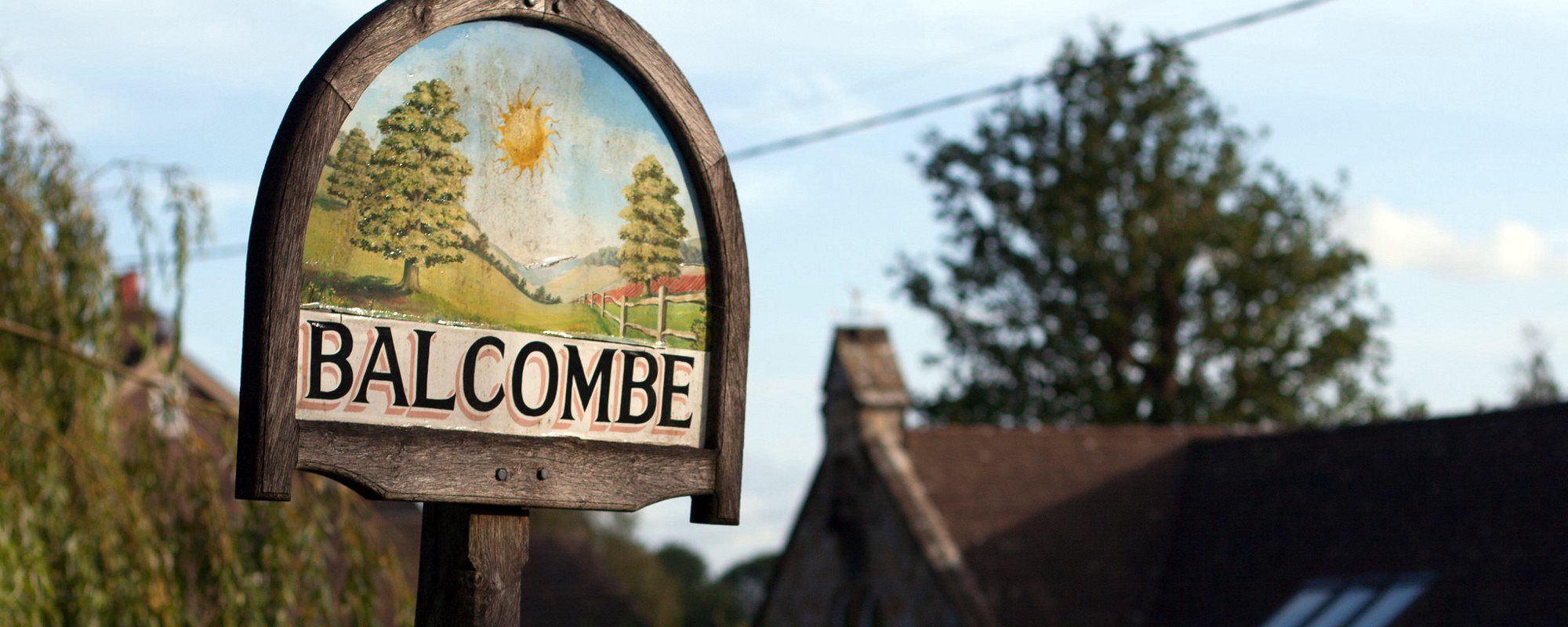

Balcombe is the quintessential English village. Green hills peppered with sheep all around, the sweeping Ouse Valley Viaduct carrying the railway over the local river to the north. It’s pretty, friendly, and very, very quiet. Sleepy, if anything. It’s not the sort of place you’d expect to launch a revolution.
But that is exactly what has happened in the past few years. Shaken by the threat of fracking in the area, local people mounted an ambitious community solar project: to match the electricity usage of the village with renewable energy–energy that they’d own. Moreover, they’d inspire other communities like theirs to follow suit. While politicians may be dragging their feet around climate change and energy democracy, the people rolled up their sleeves, got to building for themselves, and set out to repower their world from the bottom up.
This is their story.

Roll back to the summer of 2013: Balcombe rocketed into international headlines when oil and gas company Cuadrilla Holdings drove its fracking rig into town for a bit of experimental drilling.
Fracking had been discussed only minimally in the United Kingdom before 2013. There was a small but growing anti-fracking movement and the odd rumblings in the political press, but really it was just one of those weird things Americans did.
Cuadrilla’s decision to drill in Balcombe, and the resulting protests, changed all that. The Sussex anti-fracking community mobilized and Balcombe residents soon joined them. Activists poured in from around the country, emboldened by a sense that they were on the front lines of fossil fuel extraction. A cohort of journalists were close behind, and Balcombe speedily became known as “the fracking village.”
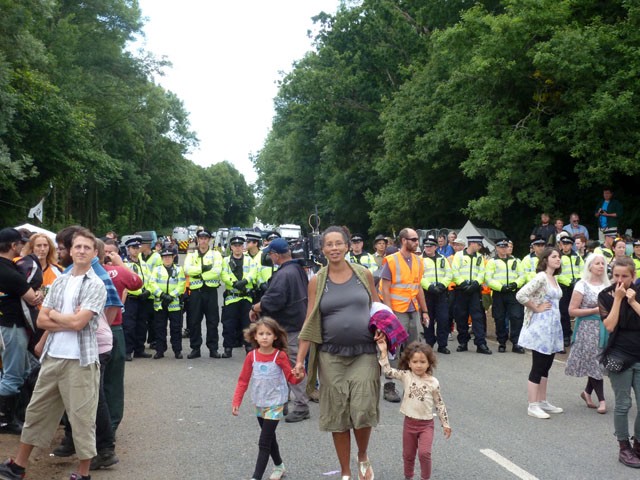
The daughter of Pretenders singer and guitarist Chrissie Hynde attracted reporters’ attention when she glued herself to another activist, and a local Green Party member of Parliament made headlines after being arrested. In the end, local law enforcement estimated that it cost £4 million ($5.7 million) to police the demonstrations.
Not everyone in Balcombe hated the idea of fracking. People disagreed about the future of energy there, just as they do anywhere else. The family owners of the land being drilled employed several villagers, and arguably that made discussion harder, especially with the extra pressure of all the outside attention.
People fell out of touch. Members of the once-close community would avoid each other at the local train station. Things got tense. As Joe Nixon, a local resident, put it: “There seemed to be a split in the village. The “‘F word’ became the unspoken topic.”
Eventually, the frackers, protesters, police, and journalists all packed up and left. Officially, Cuadrilla says it scrapped plans because the rocks in question already contain “natural fractures,” though it may still extract fossil fuels there using other methods in the future. There’s occasional talk of oil under the nearby airport of Gatwick, but the bulk of fracking activity seems, for now, to be focused on other parts of the country.
But the people of Balcombe were left bruised; they’d been forced to address a question most of us manage to avoid: How are we going to power ourselves? If not fracking, then what?
The nearby town of Lewes offered some inspiration. Back in 2011 its residents transformed the roof of the local brewery into a community-owned power station. The Lewes project had become so oversubscribed that they’d given the local school a solar roof, too. There was more community solar in Brighton, too, a few stops by train toward the coast.
People in Balcombe wondered if solar could work for them. It sounded good, especially since the resulting electricity would be free from fossil fuels and locally owned. Power for the people, in more ways than one.

A group of residents booked the village hall and held a meeting. It was packed, with over 50 people in attendance. Thirty or so put their emails down on a sign-up sheet indicating that they wanted to get involved, which eventually crystalized into a core of about 10 who volunteered to run the project.
Tom Parker, head gardener at an estate near Balcombe, was one of those keen to sign up. “Before, in the press, it was all the things about “‘typical NIMBY [Not In My Back Yard], they don’t want Cuadrilla, they don’t want this,'” he said. “It’s so nice to be able to say, actually, “‘yes, we do want stuff, and we’re very happy to have it locally, but we’d like to have some choice, please.’ And we don’t want the fossil fuel industry enforced on us. We’d rather have a green, cleaner future.”
The energy cooperative was officially registered in December 2013, naming itself Repower Balcombe. The fracking village was going solar.
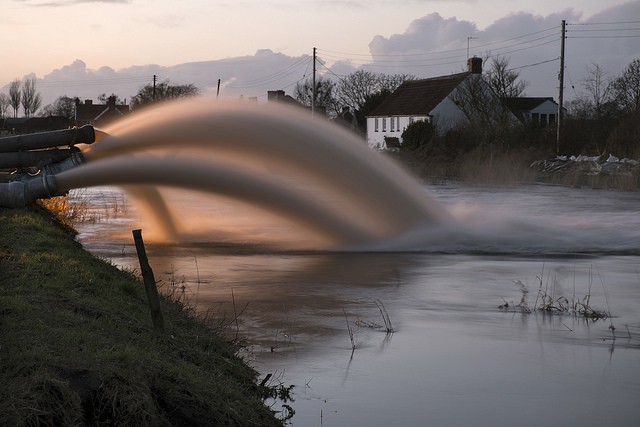
That winter, many parts of the United Kingdom endured devastating floods. While climate change has never been more than a niche hobby in this area of the world, the disastrous weather crystallized public concern. The fate of Balcombe seemed all the more tied to larger issues about the future of the nation at large, and even the world.
Repower Balcombe offered clean energy and ownership of that energy. It was also a way to reunite the village. The summer of 2013 had created a dividing line: for or against fracking. But you didn’t have to be anti-fracking to think community solar was a good bet. What the residents needed was a project that involved everyone; a way to let Balcombe be Balcombe again.
Meanwhile, the solar scheme could mean a lot to the wider population, too. The 2013 protests became a tipping point in the movement against fracking in the United Kingdom. Anti-fracking groups had been growing gradually before then, but it was only when drills arrived in a village as quaint as Balcombe that the issue caught the public’s attention. Could the positives these villagers took out of the fracking protests–turning a “no” to drilling into a “yes” for solar–be a story that resonated across the country?
As the summer of 2014 came and went, there were more anti-fracking protests, this time in Barton Moss, not far from Manchester in the north of England. A community solar project soon popped up there as well, this time spurred by the desire not just to decarbonize and maintain greater local control over energy, but also to tackle the high levels of fuel poverty in the area.
As residents in Barton Moss began the process of setting up a co-op and identifying solar sites, Repower Balcombe was experimenting with installing panels on a cowshed at a local farm–in the dead of winter. Once plugged in, the panels–surrounded by snow–were still generating.
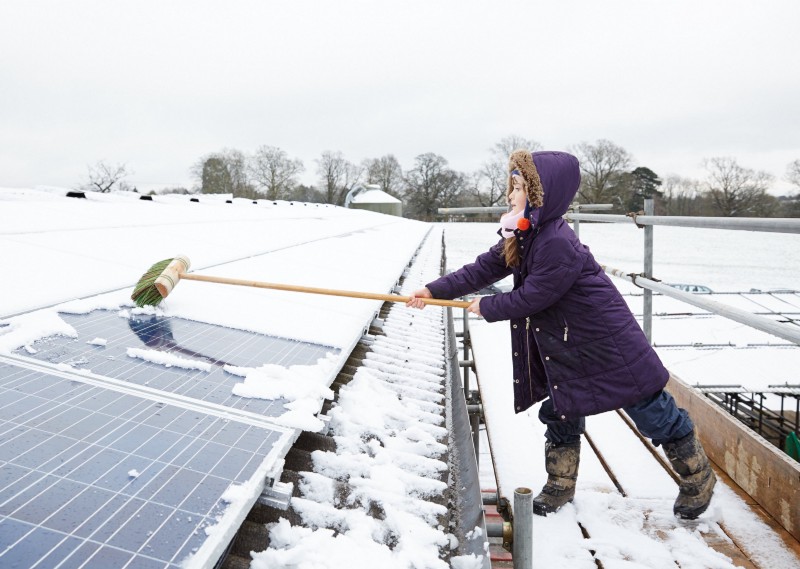
Solar was fast becoming a normal part of local life. By the summer of 2015, instead of guessing the weight of a pig at the village fair, visitors were asked to estimate how much electricity the village’s panels were producing. The co-op installed solar panels on top of two schools, including Balcombe Primary, in the heart of the village.
At the other end of the country, it was Lancashire’s turn to host a summer of anti-fracking protests. Again, local activists eyed the possibility of going solar. Pam Foster of Frack Free Lancashire told The Guardian: “We don’t want to lose this momentum–or our friendships,” adding that they were looking into community solar energy. Tina-Louise Rothery, also from Frack Free Lancashire, later told Repower Balcombe that it had been an incredible inspiration: “We want to use the community that we have built through the anti-fracking activism to create a community renewable energy project like Balcombe in the future.”
All this time, Repower Balcombe had been working on plans for “the big one”–a 20-acre, 18,500-panel solar park at Chiddinglye Farm, in nearby East Grinstead. If successful, it wouldn’t just match the electricity demand of all 760 homes in Balcombe, but of all 500 homes in the nearby village of West Hoathly as well. The little fracking village would soon have electricity to spare.
Large solar schemes like this can be controversial. Seemingly plonked on the landscape without warning, people complain about the view, or that it takes land from food or threatens biodiversity. Repower Balcombe wanted to rise above–it wasn’t just about creating energy without fossil fuels, but caring for the local area and its people, too.
The organizers promised a solar park that’d be good for wildlife, farming, and local residents. The site wasn’t much good for growing crops anyway–it needed continuous spraying with fertilizer to be productive. Beyond that, they hoped to actively create a haven for plants and wildlife. The plans included grassland and managed hedgerows to encourage wildflowers, birds, bats, amphibians, and invertebrates; any boundary fences would let small mammals like badgers or hedgehogs easily come in and forage. Those hedgerows would also act as screens–unless you were in one small part of a neighboring field, the panels would be all but invisible.

The proposal proved popular. The planning application attracted 69 comments from local people–all of them supportive–and 800 people from across the country wrote to the planning officer voicing support for the project.
But then things took a turn for the worse. In the summer of 2015, the government announced savage cuts to support for renewable energy. Its project would be safe, Repower Balcombe thought, as long as it got planning permission in time, but others like it would be hard to get off the ground. The idea of Balcombe as a tipping point, inspiring hundreds more co-ops, suddenly looked bleak. Only Barton Moss was likely to grow–the feasibility of similar co-ops in Lancashire, Kent, or anywhere else seemed pretty dim.
The planning permission hearing for the solar park was held at Haywards Heath at the start of October 2015. Finally good news: It was unanimously favored. The Repower Balcombe team was absolutely ecstatic, and itching to get started.
It had to get going quickly, too. The cuts had set a tight deadline–the park had to be built, signed off on, and plugged into the grid by the end of March 2016 or the project wouldn’t be viable. The clock was ticking. At the same time, though, there was still some uncertainty–the government had yet to officially approve the timing of the cuts. It was unlikely, but possible, that support would be cut even sooner, making it too financially risky to launch the share offer and start fundraising.
Repower Balcombe was caught in a weird policy bind–having to build as soon as possible but at the same time unable to start. Things were getting tense. Once again Balcombe found itself at the mercy of outside energy policy.
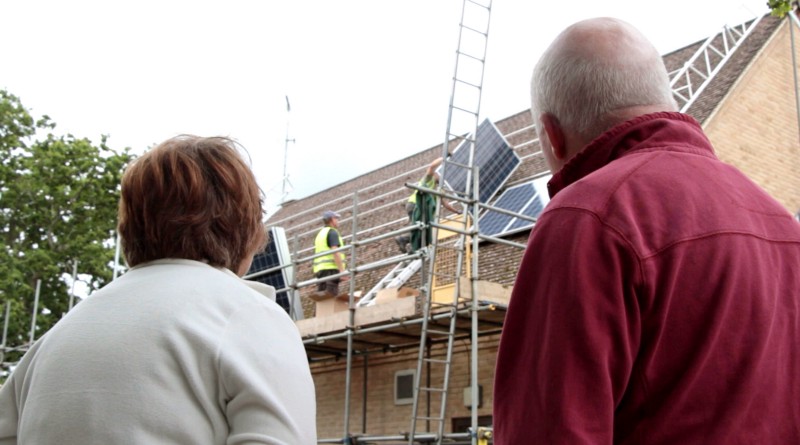
Then, tragedy struck once more. Another unexpected cut, hidden in an amendment to a finance bill announced at the end of October, reversed a promise made in March for continued support for community renewable energy schemes. After an agonizing meeting between the Repower Balcombe directors that went well into the night, they decided to pull out. The park would still be built, but by a commercial developer. The local people would no longer own it.
As Joe Nixon, now the communications director for Repower Balcombe, said at the time: “We’re still incredibly proud of the work we’ve done, and excited to see the park open next year. But it’s bitterly disappointing that it won’t be a community-run project, because we don’t just need to decarbonise our energy system, we need to give people more of a say in it.”
Still, the solar park is being built. The one-time fracking village is going renewable and will generate enough energy for the village next door, too. The project only happened because of the hard work of local people, determined to do something positive in response to the threat of fracking.
Moreover, since the school installations in the summer of 2015, there’s solar right at the heart of their village, powering the children’s lessons. It’s a powerful thing–solar in schools. Repower Balcombe still hopes to extend its community-owned renewables, albeit on a smaller scale than an entire solar park, with installations at another three local schools in 2016.
Meanwhile, policy change has threatened other schemes in progress in the United Kingdom. Some folded, and some just about made it through. In fact, just before Christmas, in a few short weeks, the British public poured nearly £15 million [$21.65 million] into community energy, helping 24 groups beat the race against the cuts and finance their solar, wind, biomass, and hydroelectric projects.
On the other side of the Atlantic, an indigenous community in Alberta is turning three decades of intensive oil, gas, logging, fracking, and tar sands exploitation on its head with a community solar project, right smack in the tar sands themselves. Community energy is surging in Australia, too. So while Balcombe’s revolution might have been aborted abruptly, the cause of people-powered renewable energy seems hard to halt.
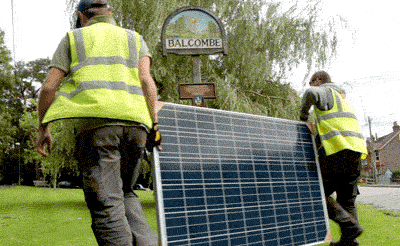

Note: Formerly the editor of How We Get To Next until spring 2015, Alice Bell is now the head of campaign communications at 10:10, the climate change charity which supports Repower Balcombe. She is writing here in a personal capacity.


How We Get To Next was a magazine that explored the future of science, technology, and culture from 2014 to 2019. This article is part of our Power Up section, which looks at the future of electricity and energy. Click the logo to read more.
